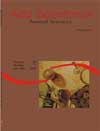Interfering factors in chick embryo development and their effect on post-hatching metabolic problems
Abstract
Breeder farm and hatchery controlled conditions allow the handling of poultry production problems while the study of physiology is necessary to find appropriate solutions. Thus, pre-hatching growth is influenced by nutrition, age, genetics and metabolism of the layer at the laying moment, by adequate oxygen supply from laying to hatching, as well as by hatchery temperature and relative humidity. Pre-hatching hypoxia is a stimulus for pipping but if it is not synchronous to lung and heart maturation and embryonic metabolism, its lasting will favor the occurrence of diseases. Thyroid hormone production has decreased in modern broiler lines thus diminishing eggshell conductance, layer investment, embryo glicogenic activity and glicogen stock resulting in a longer pre-hatching hypoxia and ascite and other post-hatching diseases.Downloads
Download data is not yet available.
Published
2008-07-16
How to Cite
Rondón, E. O. O., & Murakami, A. E. (2008). Interfering factors in chick embryo development and their effect on post-hatching metabolic problems. Acta Scientiarum. Animal Sciences, 20, 373-382. https://doi.org/10.4025/actascianimsci.v20i0.4405
Issue
Section
Zootecny
DECLARATION OF ORIGINALITY AND COPYRIGHTS
- I Declare that current article is original and has not been submitted for publication, in part or in whole, to any other national or international journal.
The copyrights belong exclusively to the authors. Published content is licensed under Creative Commons Attribution 4.0 (CC BY 4.0) guidelines, which allows sharing (copy and distribution of the material in any medium or format) and adaptation (remix, transform, and build upon the material) for any purpose, even commercially, under the terms of attribution.
Read this link for further information on how to use CC BY 4.0 properly.
0.9
2019CiteScore
29th percentile
Powered by 








































